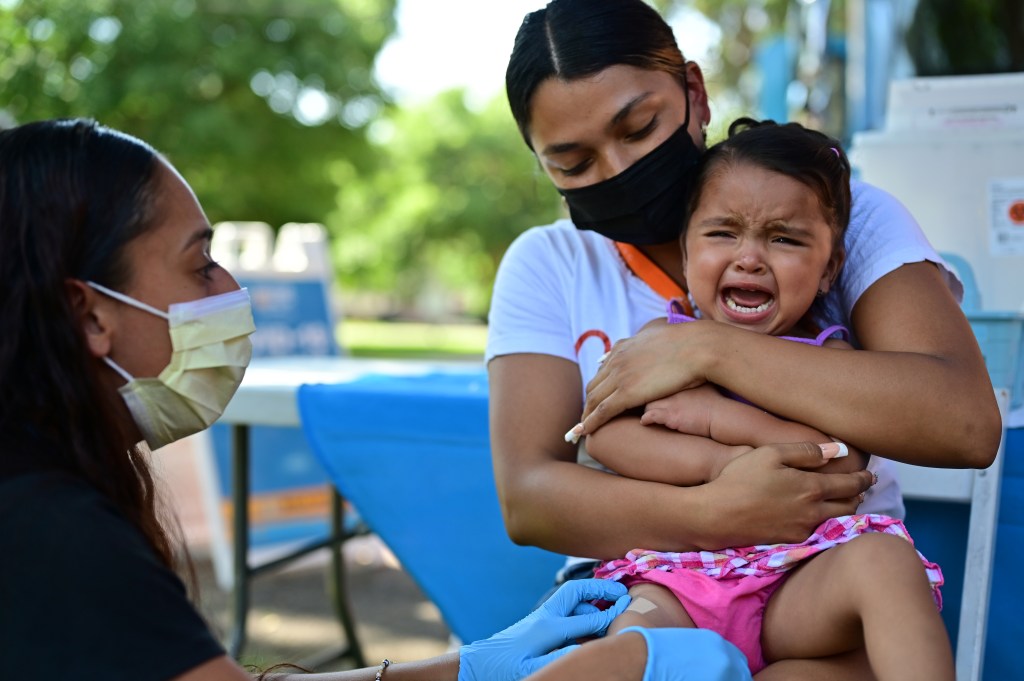
Are Colorado parents vaccine hesitant post COVID-19 or just behind?
Last Updated on August 10, 2023 by Admin
[ad_1]

It’s back to school. Are your kids vaccinated? Equally important, are the other kids vaccinated? Under Colorado law, students in grades k-12 must be vaccinated for chickenpox, diphtheria, hepatitis B, measles, mumps, pertussis, polio, rubella, tetanus, and whooping cough unless parents seek a medical, personal, or religious exemption.
Unfortunately, the percentage of kindergarteners and older students who are fully vaccinated has declined over the past couple of years. Only 88% of kindergarteners were up to date on their shots in the 2022-2023 school year, down from 5.2% from the last school year. There was a 2.2% decrease in vaccination rates among all school-aged kids over that time. Older students were less likely to be vaccinated than they were in 2018.
Sadly, whether because of procrastination or vaccine hesitancy, the decline in vaccination rates increases the probability of an outbreak. For people to achieve group-level immunity for measles, which is highly transmissible, 95% of the group must be vaccinated. If the virus gets a toehold, unvaccinated individuals will likely be infected. Not everyone who is unvaccinated is unprotected by choice. Some people cannot be vaccinated for health reasons; their immune system is too weak or they have an allergy. And, in a small percentage of those who are vaccinated, the vaccine does not work.
Several of diseases covered by the law can be fatal. A person who gets measles can develop encephalitis–swelling of the brain—which can lead to convulsions, brain damage, deafness, or death. In every 1,000 cases of measles in children, one kid will get encephalitis. Pneumonia is the other risk. One in 20 children with measles will contract pneumonia which can be deadly. Out of 1,000 children who are infected with measles, one to two children will die. Prior to the introduction of the vaccine in 1963, 450 to 500 people died each year from measles complications.
The drop in vaccination rates over the past two years is worrisome. Are more parents increasingly opting their students out of vaccinations or have they gotten behind? Polling data, unfortunately, suggest the former.
The percentage of American adults who believe healthy children should be vaccinated against measles, mumps, and rubella in order to remain enrolled in public school has declined since the pandemic. In a 2019 poll, 82% of respondents agreed with that statement. By December 2022, the percentage dropped to 71%. Likewise, the percentage of respondents who think parents should be able to decide not to vaccinate their kids, even if it imperils other children, rose 16% to 28%. This increase was more pronounced among Republicans; 44% of those polled agreed down from 20% pre-pandemic. The pollster suggested, “the experience of the COVID-19 pandemic and debates over vaccine requirements and mandates appear to have had an impact on public attitudes towards MMR vaccine requirements for public schools.”
Politicization of science has its consequences, and both parties are to blame. COVID vaccines saved millions of lives by reducing the probability of severe infection. The rapid creation of COVID vaccines was a marvel of modern medicine. This victory was diminished by partisanship. Heavy-handed mandates, hysterical shaming, and censorship by politicians on the left induced resentment, distrust, and hysterical conspiracy theorizing on the right. Unvaccinated people died at higher rates.
Sadly, the backlash over COVID vaccines may be contributing to general vaccine hesitancy. It is too early to tell if the dip in childhood vaccination rates is a trend or an anomaly. Let’s hope it’s the latter. No medical intervention has saved more lives than vaccines.
Krista L. Kafer is a weekly Denver Post columnist. Follow her on Twitter: @kristakafer
Sign up for Sound Off to get a weekly roundup of our columns, editorials and more.
To send a letter to the editor about this article, submit online or check out our guidelines for how to submit by email or mail.
[ad_2]
Source link




